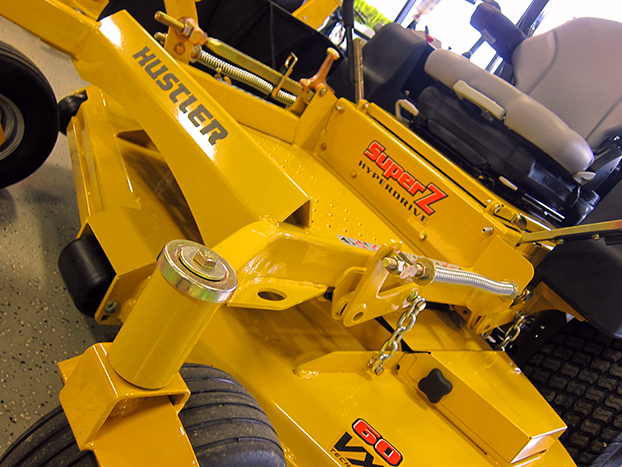Before you pick up your rake or start the power blower, consider the healthiest way to deal with leaves. Heavy layers of leaves will damage grass. Grass becomes compacted, excess phosphorous may damage soil, and plants are starved for light and air. There are simpler and healthier methods to deal with leaves rather than filling plastic trash bags. Consider some of the options below.
Mow your leaves
I treat leaf season no different than spring. My grass grows so quickly in the spring, I often cut twice or even three times a week. In the fall, I attach the rear grass catcher to my mower, raise my cutting deck to the highest setting and mow the leaves. There’s some great benefits to following this practice. Many of the nutrients in the leaves are returned to soil, excess leaves never linger on my turf, my mower reduces the leaves to a fine mulch and my lawn looks great from curb.
If leaves are finely mulched
Since I use a mower and grass catcher, the finely mulched leaves go into my compost. This mulch is great for gardens and to blend into landscape mulch. I turn over and add mulch around my landscaping in the fall to keep bushes, shrubs and flower beds insulated during cold months.
There’s too many leaves to mow
Eventually, the tree in my front lawn drops too many leaves to simply mow over. A rake is quiet and makes a great chore for kids, but adults with little time can opt for a power blower. Power blowers come in handheld and backpack varieties (discover all of the differences). Once you pile the leaves, you need to dispose of them.
Reducing the pile
A string trimmer is a great tool for reduce the pile of leaves in your lawn. Once the pile is manageable, makes a few passes with your lawn mower will quickly pick up the fine debris. As you begin bagging the remains, remember gardeners love compost. As well, wooded areas in your lawn and neighborhood benefit from the insulation and nutrients of fallen leaves.


Recent Comments